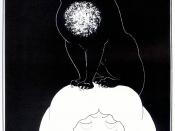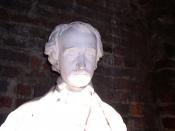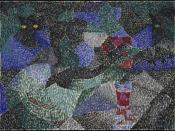A Shift in the Balance of Good and Evil Reveals the Dark Side of Man.
Edgar Allan Poe is considered by many to be one of the greatest short story writers. Many of Poe's stories deal with evil triumphing over good. Poe creates characters that allow the readers to see into the dark side of the human psyche. This is especially true in three of Poe's short stories. Poe had an incredible insight into the region between sanity and madness (Stevenson, 500). Through the characters in "The Tell-Tale Heart", "The Black Cat", and "The Cask of Amotillado, Poe demonstrates that a shift in the balance of good and evil reveals the dark side of man.
Each character in the stories has some special reason behind his insanity, but only the reader feels the evil acts are caused by insanity. The characters are unable to locate the origin of their evil (Gargano, 329).
In "The Black Cat" the narrator holds the cat responsible for his insanity. At first the cat is neither good nor evil, but it changes its roles with every psychological change in the narrator. Initially, the narrator finds extreme happiness in feeding and caring for his pets. This intimacy with the cat is a substitute for "paltry friendship and gossamer fidelity of mere man" (Gargano, 325). In the mind of the narrator, the cat is his only true friend. The cat is a symbol for the contact and friendships he could have with the outside world. The narrator psychologically gives the cat task of being his best friend. The cat acts as the symbol of what ultimately drives the narrator insane.
In "The Tell-Tale Heart" what makes the narrator lose control is a blue eye. Ironically the narrator claims to love the old man very dearly because he...



Poe
This was a very good essay. I havent read much of poe's art but I learned alot from this essay. Poe is a great person a little screwy but hes good!
4 out of 5 people found this comment useful.